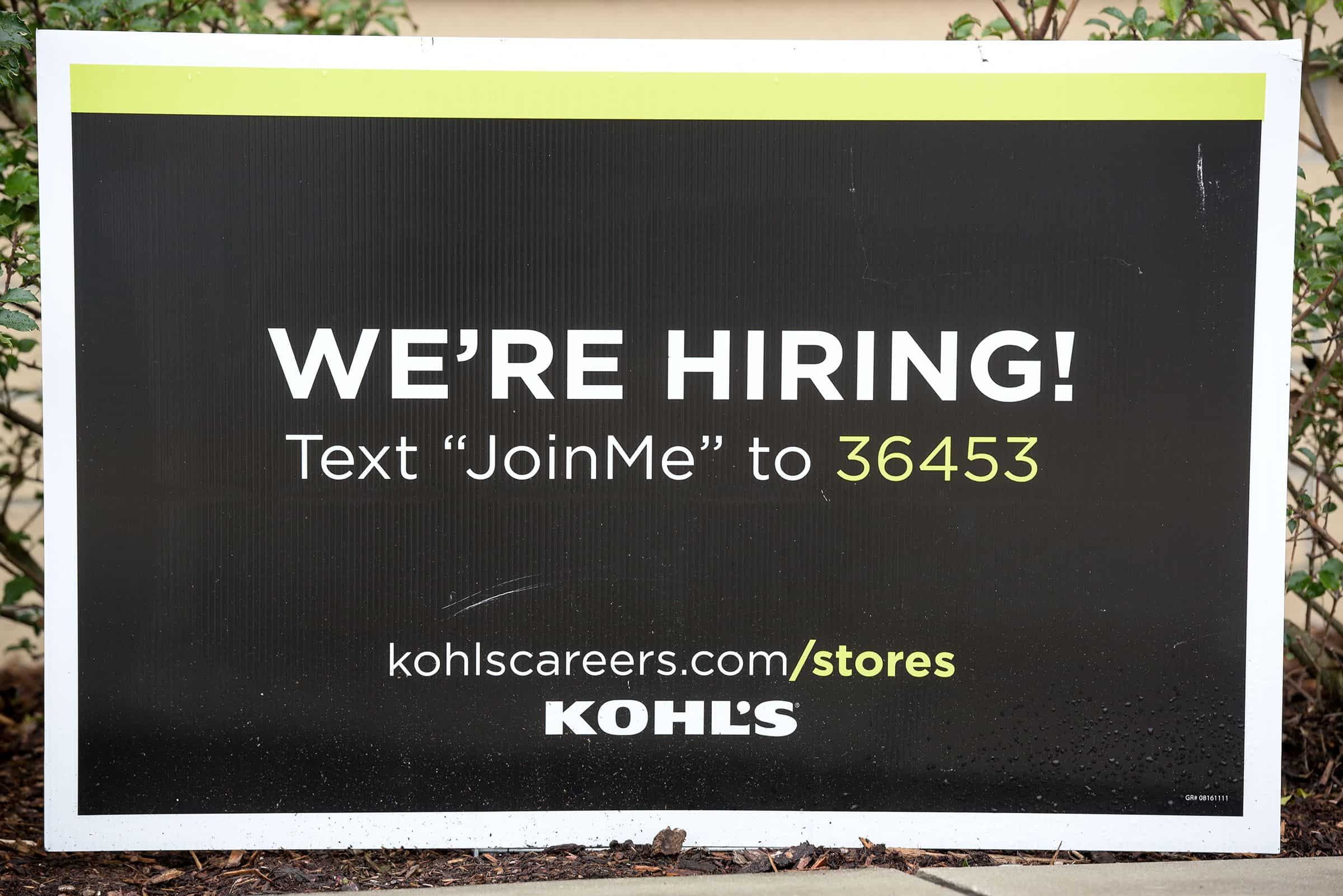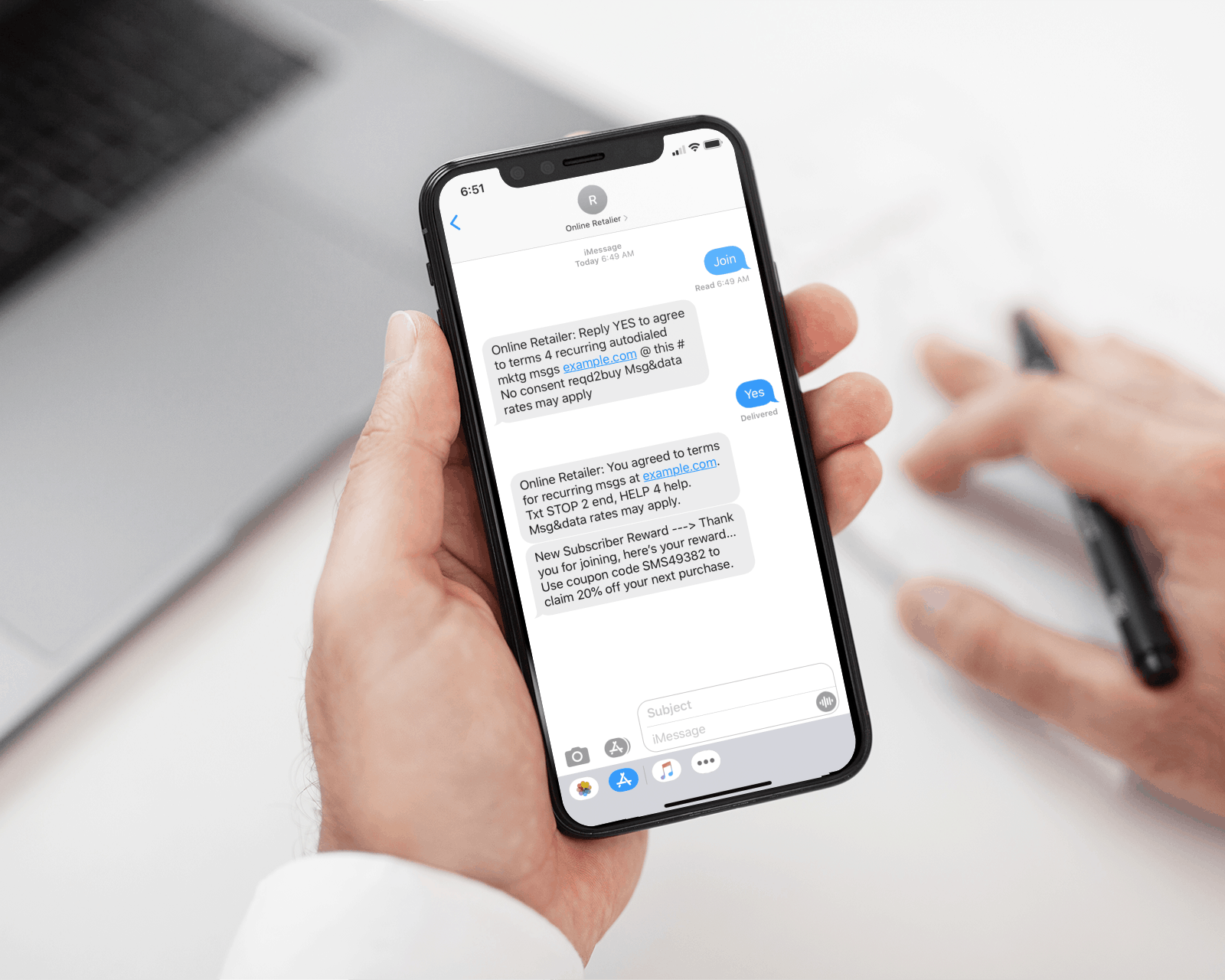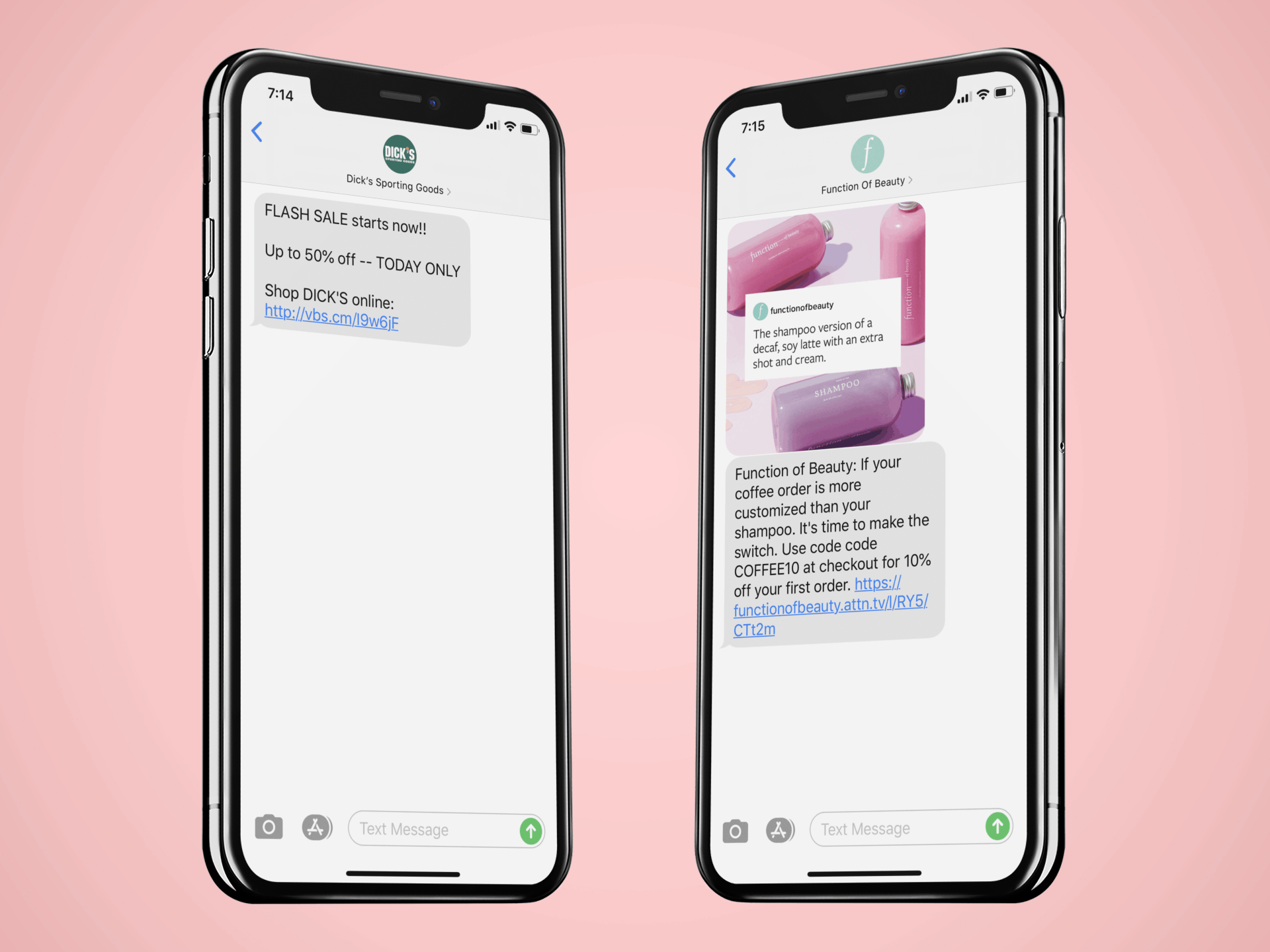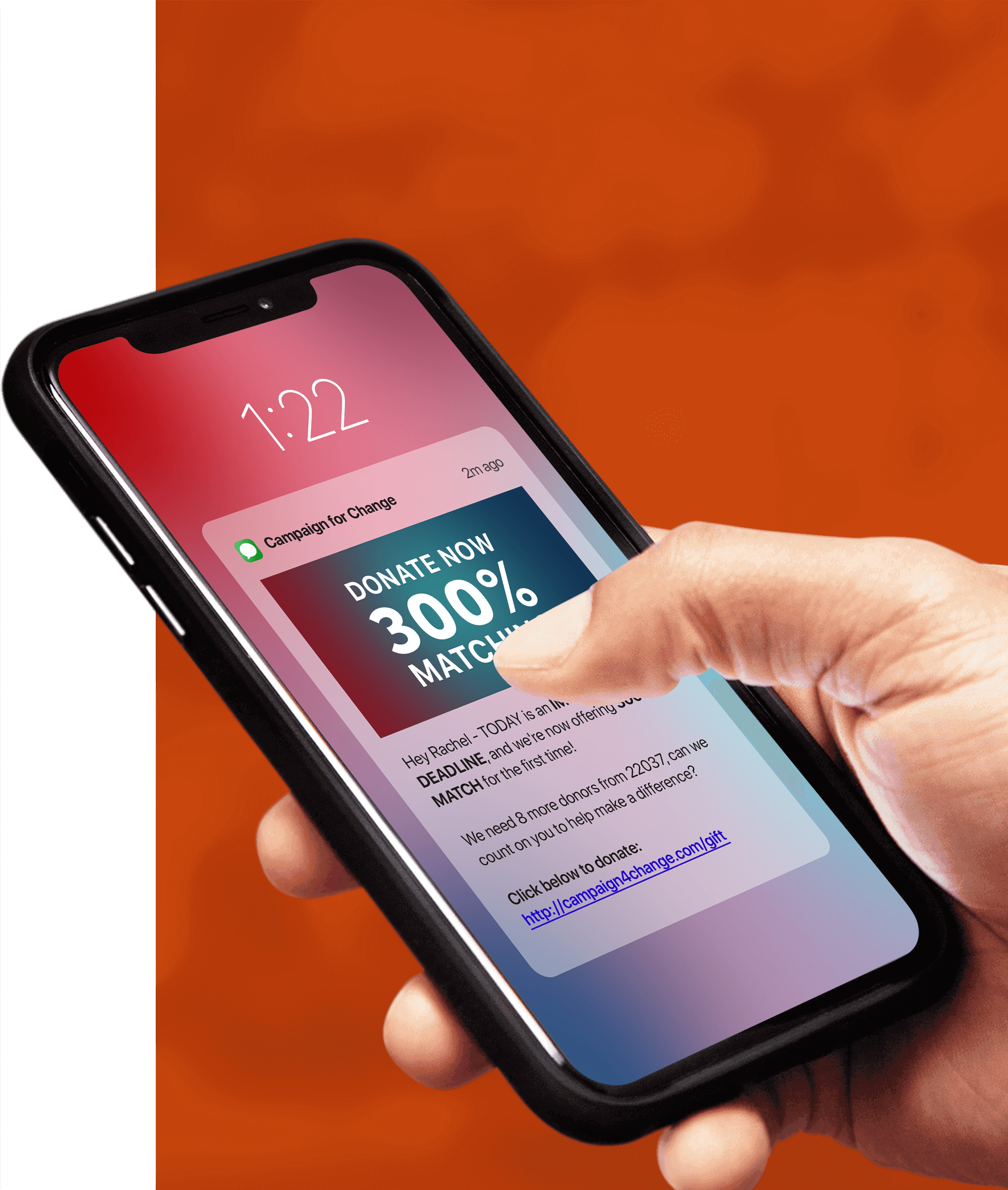989 Views
In the video above, Tatango CEO Derek Johnson outlines how retailers use text message marketing. Prefer to read instead? No problem, see the post below. You can also find answers to all your SMS marketing questions in our Q&A video library.
Most retailers have one common goal when it comes to marketing, and that’s to drive sales, either in store or online. Ultimately, no matter the marketing tactic, whether digital or print, the retailer’s goal is to increase the number of sales. Text message marketing is another channel a retailer’s marketing team can use to spread the word about their products. But how exactly does a retailer go about sending text messages to their customers?
How Can Retailers Send Text Messages to Their Customers?
If you want to branch out into the text message marketing channel, the best practice is to begin building an SMS subscriber database. You can do this by advertising a keyword that is specific to your campaign and prompts the SMS software to complete a specific action. “Join” is a common opt-in keyword retailers use in their SMS marketing.
When retailers advertise a keyword, they prompt consumers to text that word to their short code, as shown in the example below. A short code is a five to six-digit phone number a brand leases to run its SMS marketing campaign. A short code can be specifically chosen by the brand, or it can be assigned at random. Short codes that are chosen tend to be visually appealing and easier for customers to remember, such as “1-2-3-4-5.” In addition, short codes can be shared by multiple companies, or they can be unique to just one.
How Can Customers Opt in to Receive Text Messages From Retailers?
The opt-in process is very important, especially for retailers in the United States. Federal laws under the Telephone Consumer Protection Act (TCPA) require recipients to give consent to receive auto-dialed text messages from any organization. The retailer must always make sure they’re sending text messages only to customers who want to receive them.
The industry best practice is to implement a double opt-in process (see example below) for every subscriber, whether they subscribed from a webpage form, at the time of purchase, or by sending a keyword to the brand’s short code. This process will help safeguard the retailer from legal actions as a result of their text message marketing.
What Benefits Does Text Message Marketing Have for Retailers?
As with any new marketing channel, it takes time to build a subscriber database. However, no matter the size of your list, you can start reaping the benefits of text message marketing right away.
Text messages have a 99 percent open rate! So if you have two subscribers or 1 million, the odds of your message being read are pretty close to perfect! And 90 percent of text messages are opened within three minutes of being sent, which is great for flash sales. Additionally, text message marketing is a spam-free, folder-free channel. Not only will your message not end up in a spam folder, but it also won’t be categorized as a promotion or update as often happens with many email services.
How Can Retailers Grow Their Subscriber List?
Even if a retailer has two subscribers, it’s a best practice to consistently send text messages. Consumers expect to receive messages right when they opt in, not several weeks or months later.
Because of the benefits of text message marketing, retailers want their lists to be as large as possible. At Tatango, we’ve noticed that the best way to quickly grow an SMS subscriber database is by offering an incentive. For example, a retailer may run an advertisement that states, “Save 20% off today when you join our mobile club. Text JOIN to 12345.” A study found that consumers are 520 percent more likely to provide their mobile phone number as long as there was some type of incentive offered by the brand. This is a great way to grow your SMS subscriber list and boost sales.
As a retailer grows its subscriber database, we recommend sending a wide range of offers, alerts, event reminders, and anything the brand wants to send out that will drive both online or in-store sales eventually. In addition, retailers use a wide range of tactics to boost both online and in-store sales. A brand can send two types of marketing messages: an MMS message or an SMS message. See the example and details below.
SMS Marketing Message
An SMS marketing message allows 160 characters of text, a hyperlink, and a phone number. Retailers use SMS marketing messages for a simple and short message.
MMS Marketing Message
An MMS marketing message is much longer than an SMS message. It allows for 5000 characters, including a subject line. In addition to more characters, MMS messages can also include media content such as videos, images, and GIFs. MMS messages are particularly appealing because they allow retailers to explain promotions and add graphics to advertise their merchandise.
We’ve helped hundreds of retailers kick off their SMS marketing campaigns. Looking to get started? Chat with an SMS marketing expert.



